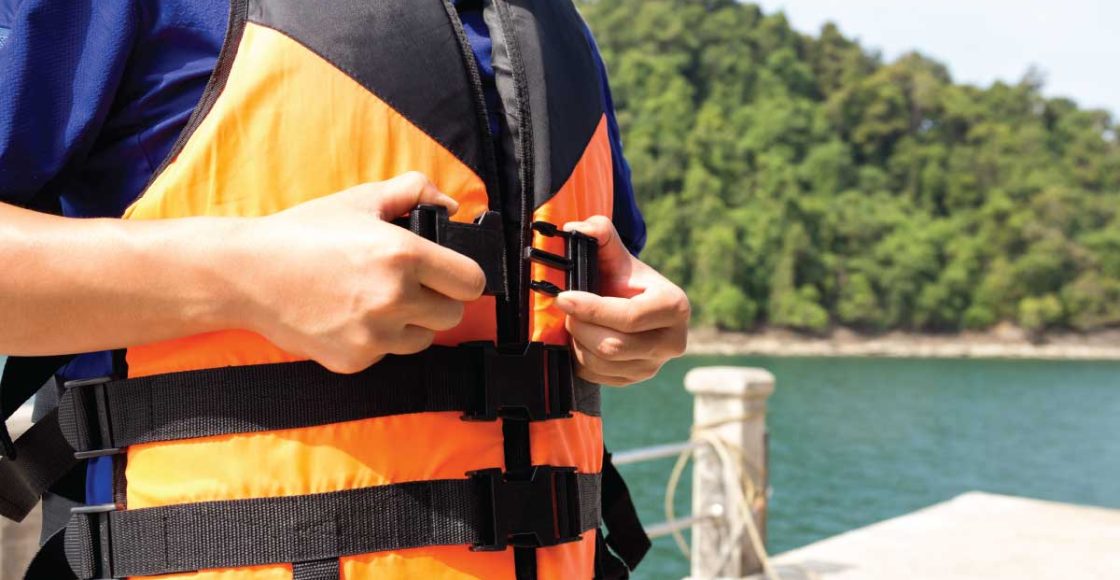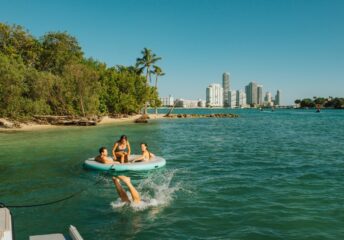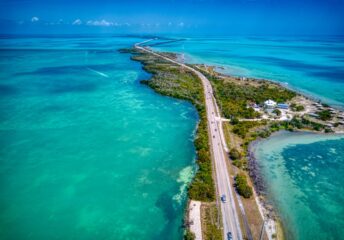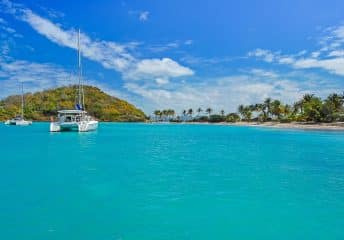Know Your Life Jackets: A Guide to Types and Safety Tips
Last Updated on May 7, 2025 by Boatsetter Team
With so many types available, how do you know which one to choose? Use this guide to understand the five main U.S. Coast Guard–approved life jacket types, what they’re best for, and how to choose the right one for your boating activity.
Explore boat rentals & on-the-water experiences near you
5 types of U.S. Coast Guard approved life jackets
Each type is designed for different conditions and activities, knowing the difference can help you choose the safest option for every trip.
Type I: Offshore Life Jackets
-
Best for: Open, rough, or remote waters where rescue may take time
-
Buoyancy: 22 pounds
-
Features: Turns most unconscious wearers face up
-
Note: These are the most buoyant and reliable, but also the bulkiest
Type II: Near-Shore Buoyant Vests
-
Best for: Calm, inland waters where quick rescue is likely
-
Buoyancy: 15.5 pounds
-
Features: May turn unconscious wearers face up, but not guaranteed
-
Note: Less bulky than Type I, more commonly used for recreational boating
Type III: Flotation Aids
-
Best for: Known waters, supervised activities like kayaking, water skiing, or fishing
-
Buoyancy: 15.5 pounds
-
Features: Comfortable, easy to wear for extended periods
-
Note: Not designed to turn unconscious wearers face up
Type IV: Throwable Devices
-
Best for: Boats 16 feet or longer (required onboard in addition to wearable PFDs)
-
Examples: Life rings, seat cushions with handles
-
Note: Not for unconscious individuals, non-swimmers, or children
Type V: Special-Use Devices
-
Best for: Specific activities like windsurfing, kayaking, or paddleboarding
-
Features: Must be worn as labeled to meet Coast Guard requirements
-
Note: Often inflatable and low-profile, but must be actively worn to count
Tips for choosing & using a life jacket
If you’re renting a boat, the Captain will point out where life jackets are stored and can assist with fitting them properly.
-
Fit matters: Always try on your life jacket to make sure it fits snugly without restricting movement. A good test? Raise your arms and have someone tug gently on the jacket’s shoulders—if it slips up, it’s too loose.
-
Check the label: Only U.S. Coast Guard–approved jackets meet federal safety requirements. Look for the approval number and proper use case on the tag.
-
Match the activity: Choose your jacket based on where you’re boating and what you’ll be doing. Higher-risk activities often require more specialized flotation.
-
Maintain it: Rinse with fresh water after use, check for wear or damage regularly, and never use a jacket that’s torn, punctured, or waterlogged.
Yes, life jackets can be stylish too
Wearing a life jacket doesn’t mean sacrificing style. These days, manufacturers are designing PFDs that combine safety with sleek silhouettes, bold colors, and performance fabrics. Here are a few standouts to consider:
-
For women: Brands like Astral and Stohlquist offer flattering cuts, breathable mesh panels, and quick-dry materials in modern colorways.
-
For men: Look for minimalist styles from Onyx or NRS that prioritize fit, mobility, and subtle color blocking.
-
For kids: Safety meets fun with bright prints and characters from trusted brands like Stearns and O’Neill, making it easier to get little ones excited to suit up.
-
For watersports: Inflatable belt packs and slim-profile vests from Mustang Survival and Spinlock offer a low-key look with all the functionality—great for paddleboarders and anglers.
A comfortable, good-looking life jacket is more likely to be worn, which makes it not just a smart buy, but a safer one too.
Just wear it
According to the U.S. Coast Guard, roughly 80% of drowning victims in recreational boating accidents in recent years were not wearing a life jacket. Whether you’re a seasoned captain or a first-time guest, a properly worn life jacket is the single most important piece of safety equipment on board. Join the Wear It Pledge, a national initiative to encourage boaters to always wear their life jackets while on the water. It’s a simple action that can save your life and help promote safety across the entire boating community.

Kim Kavin has been on boats in more than 50 countries and islands, including in the Caribbean, Mediterranean, South Pacific, Indian Ocean and Southeast Asia. She grew up learning to steer a ski boat and Hobie Holder at her grandfather’s lake house in New Jersey, and went on to spend time aboard everything from America’s Cup racing sailboats to submarines.
Kim is a PADI-certified scuba diver and animal lover who always enjoys a good, long look around a coral reef. Her award-winning writing and editing regularly appears in national marine magazines and on leading websites. In her early years, she was a Dow Jones editing intern and a graduate of the University of Missouri-Columbia School of Journalism. When she’s not writing, Kim can usually be found hiking northwest New Jersey’s beautiful park trails with her adopted shelter mutt, Ginger.










